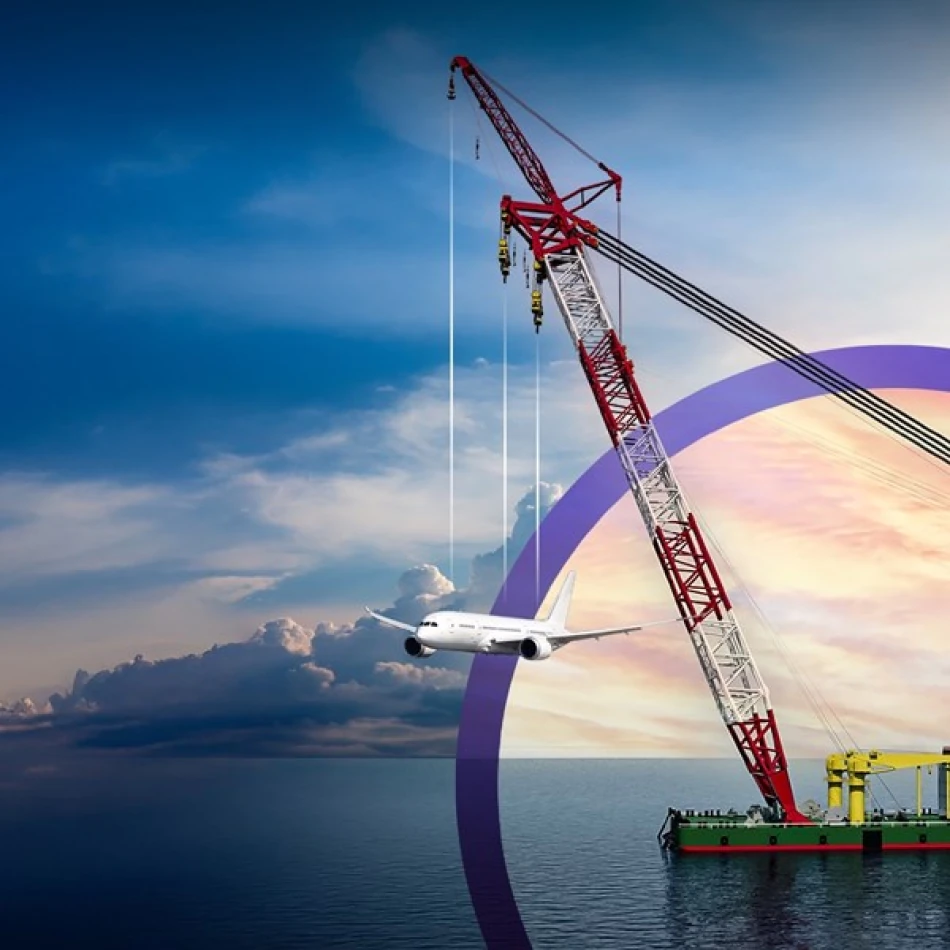
World's Leading Dry Dock Launches Competition to Name the Mightiest Crane in the Middle East
Dubai Launches Public Contest to Name Middle East's Largest Floating Crane as Maritime Ambitions Soar
Dubai World's Drydocks World has opened a public naming competition for its groundbreaking 5,000-ton floating crane—the largest of its kind in the Middle East and Africa. Set to arrive in summer 2026, this engineering marvel represents Dubai's bold strategy to cement its position as the region's premier maritime and industrial hub, capable of handling massive offshore energy projects that smaller facilities cannot accommodate.
Engineering Powerhouse Targeting Mega-Projects
The floating crane, manufactured by Shanghai Zhenhua Heavy Industries (ZPMC), can lift loads up to 5,000 tons to heights of 120 meters above water level. This capability positions Dubai to compete directly with established maritime centers like Singapore and Rotterdam for lucrative offshore wind, oil platform, and mega-yacht construction contracts.
The timing is strategic. As the global energy transition accelerates, demand for heavy-lift capabilities in offshore renewable projects is surging. Dubai's investment signals its intention to capture a larger share of this growing market, particularly as regional oil economies diversify their industrial bases.
Four Decades of Maritime Leadership
Drydocks World, established in 1979 by the late Sheikh Rashid bin Saeed Al Maktoum at Rashid Port, has spent over four decades building Dubai's reputation as a maritime repair and construction center. The facility has serviced some of the world's largest oil tankers and developed sophisticated floating infrastructure that serves vessels across the Indian Ocean trade routes.
This historical foundation gives Dubai a competitive advantage over newer maritime centers. Unlike emerging competitors, Dubai combines established expertise with cutting-edge technology, creating a compelling value proposition for international shipping companies and offshore developers.
Market Implications and Regional Competition
The crane's arrival will likely intensify regional competition. The UAE already competes with Qatar's expanding maritime capabilities and Saudi Arabia's NEOM project ambitions. However, Dubai's established ecosystem of maritime services, from financing to logistics, provides integrated solutions that standalone facilities cannot match.
For investors and maritime companies, this development suggests Dubai is doubling down on its industrial diversification strategy. The facility's enhanced capabilities could attract new anchor tenants and long-term service contracts, particularly from European offshore wind developers seeking regional maintenance hubs.
Community Engagement Meets Industrial Strategy
The public naming competition, inviting everyone from engineers to poets, reflects Dubai's broader approach to nation-building through inclusive participation. This strategy has proven effective in generating public buy-in for major infrastructure projects while creating cultural ownership of economic initiatives.
Sultan Ahmed bin Sulayem, Chairman and CEO of DP World, emphasized the symbolic importance: "The new crane is not just a machine, but a symbol of Dubai's ambition, resilience and engineering excellence."
Captain Dr. Rado Antolovic, CEO of Drydocks World, positioned the investment within Dubai's four-decade maritime journey, calling it "a qualitative leap in size, capacity and innovation."
Strategic Timing in Global Maritime Markets
The 2026 delivery timeline aligns with projected growth in offshore renewable energy projects across the Middle East and East Africa. As regional governments commit to net-zero targets, demand for heavy-lift maritime services will likely outpace supply, potentially creating pricing advantages for facilities with advanced capabilities.
This investment also hedges against potential shifts in global trade routes, ensuring Dubai maintains relevance regardless of whether traditional shipping patterns evolve due to geopolitical or technological changes.
Most Viewed News

 Layla Al Mansoori
Layla Al Mansoori






